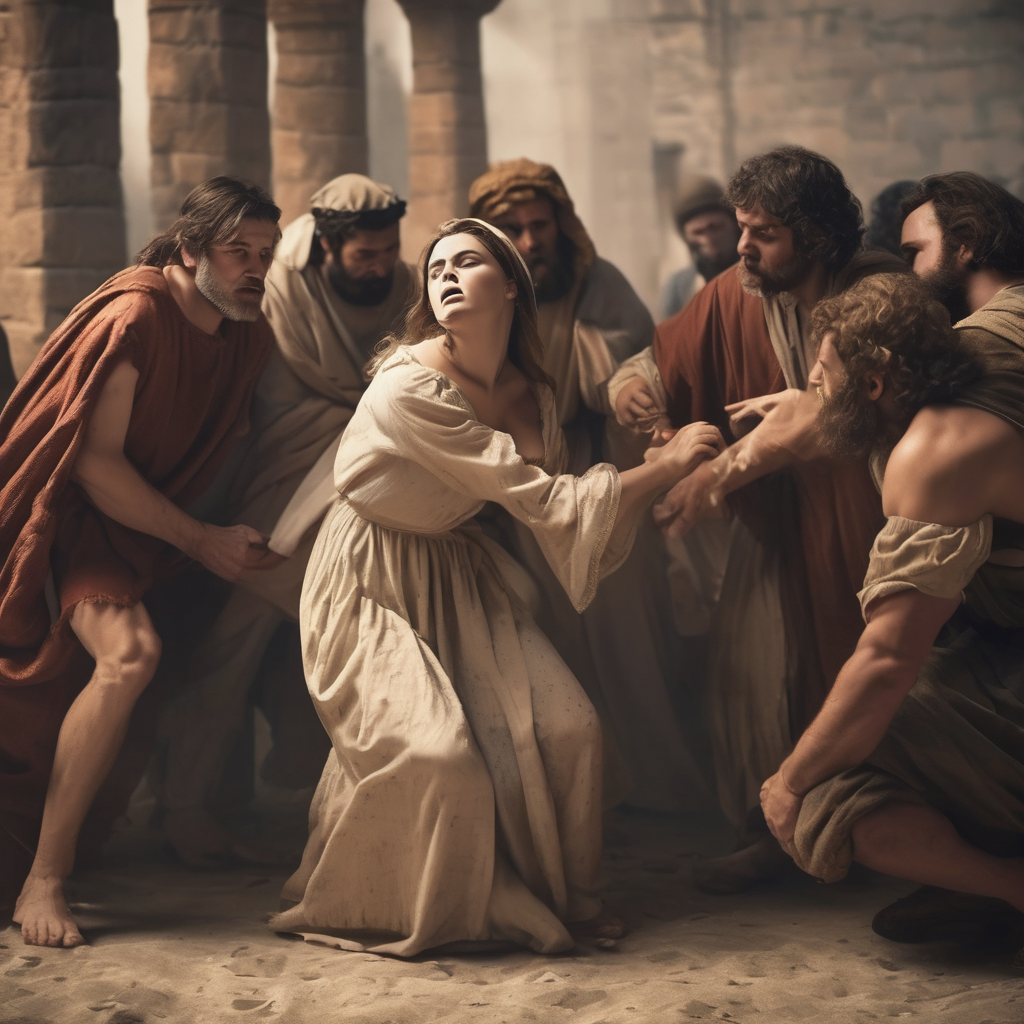
The Power of Compassion: Lessons from the Woman Caught in Adultery
Exploring the Transformative Message in John 8:1-11
A truly enlightening passage from the Gospel of John.
In this passage, we encounter the story of the woman caught in adultery. Let us delve into the key points of each verse:
Verse 1: “But Jesus went to the Mount of Olives.” This verse simply sets the scene, informing us of Jesus’ location.
Verse 2: “Early in the morning, he came again to the temple. All the people came to him, and he sat down and taught them.” Here, we see Jesus returning to the temple, a place of spiritual significance, and the people gather around him to listen to his teachings.
Verse 3: “The scribes and the Pharisees brought a woman who had been caught in adultery and placing her in the midst.” The religious leaders bring forth a woman caught in the act of adultery, intending to test Jesus and find an opportunity to accuse him.
Verse 4: “They said to him, ‘Teacher, this woman has been caught in the act of adultery.'” The scribes and Pharisees present their accusation before Jesus, emphasizing the woman’s sin.
Verse 5: “Now in the Law, Moses commanded us to stone such women. So what do you say?” The religious leaders reference the Mosaic Law, which indeed prescribes stoning as a punishment for adultery, seeking Jesus’ judgment on the matter.
Verse 6: “This they said to test him, that they might have some charge to bring against him.” The key point here is that the scribes and Pharisees are not genuinely seeking justice but rather attempting to trap Jesus in a precarious situation.
Verse 7: “And as they continued to ask him, he stood up and said to them, ‘Let him who is without sin among you be the first to throw a stone at her.'” Jesus responds with divine wisdom, turning the situation on its head. He challenges the accusers to examine their own hearts and casts light upon the universal human condition of sinfulness.
Verse 8: “And once more he bent down and wrote on the ground.” This action of Jesus is not explicitly explained in the passage, leaving room for interpretation and speculation among theologians.
Verse 9: “But when they heard it, they went away one by one, beginning with the older ones, and Jesus was left alone with the woman standing before him.” The religious leaders, convicted by Jesus’ words and their own consciences, begin to disperse, leaving Jesus alone with the woman.
Verse 10: “Jesus stood up and said to her, ‘Woman, where are they? Has no one condemned you?'” Jesus addresses the woman with compassion and concern, acknowledging that her accusers have departed.
Verse 11: “She said, ‘No one, Lord.’ And Jesus said, ‘Neither do I condemn you; go, and from now on sin no more.'” Jesus, in his mercy and grace, does not condemn the woman but urges her to turn away from her sinful ways and live a life of righteousness.
As for the application of this passage in contemporary Christian society, it carries several important lessons. Firstly, it reminds us of the importance of compassion and forgiveness. Jesus, though fully aware of the woman’s sin, does not condemn her but offers her a fresh start. This teaches us the power of redemption and the need to extend forgiveness to those who have fallen.
Secondly, it emphasizes the need for self-reflection and humility. Jesus challenges the accusers to examine their own hearts before passing judgment, reminding us that none of us are without sin. This calls us to approach situations with a spirit of humility and self-awareness.
Lastly, this passage invites us to move beyond legalism and embrace a spirit of grace. The religious leaders were focused on strict adherence to the law, but Jesus demonstrates that true righteousness goes beyond mere legal requirements. He emphasizes the importance of personal transformation and a commitment to living a life free from sin.
Take home message: John 8:1-11 teaches us about compassion, forgiveness, self-reflection, humility, and the transformative power of grace. It guides us to approach others with love and understanding, to evaluate our own shortcomings, and to strive for a life of righteousness
